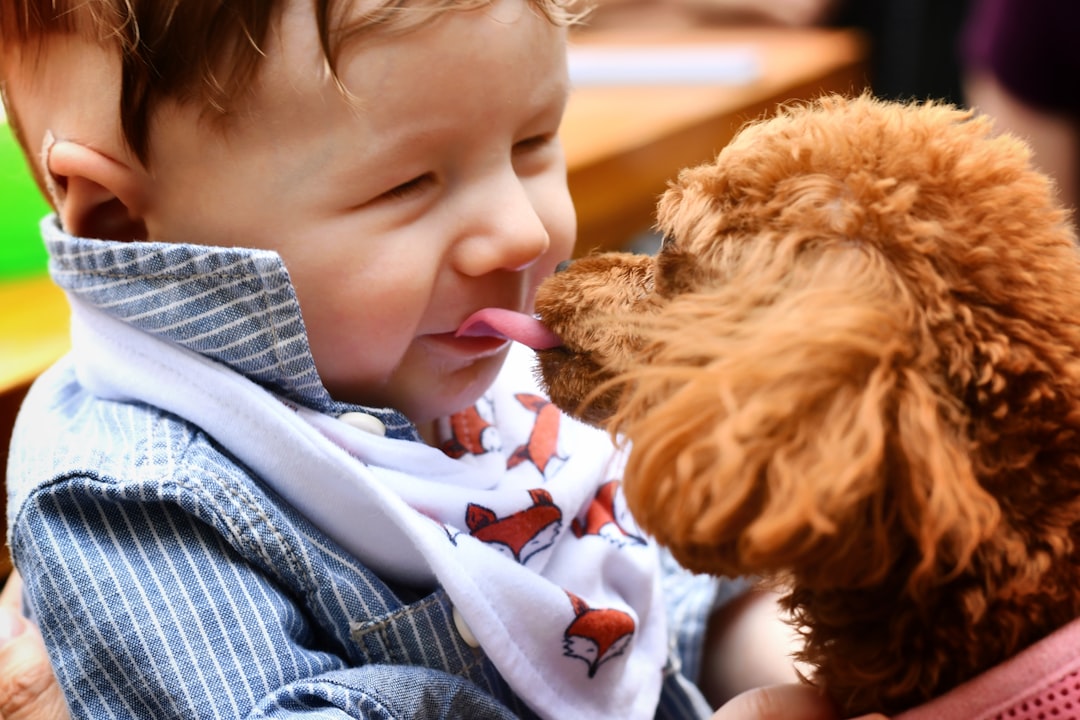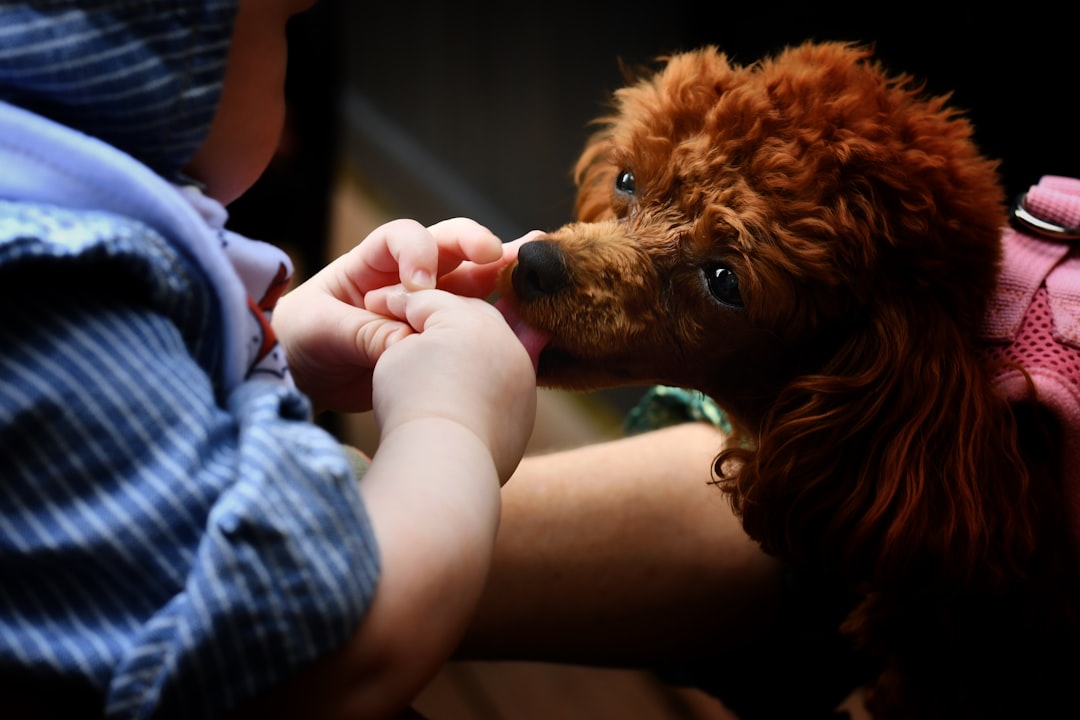The Lick of Love: Exploring the Social Significance of Dog Licking
The article explores the social significance of dog licking, including its evolutionary origins, communication and bonding purposes, health risks, and ways to address problematic licking behavior.
Evolution of Dog Licking Behavior
The behavior of dog licking has deep evolutionary roots and is often attributed to instincts learned from puppies licking their mother to greet her and encourage her to regurgitate food for them. This behavior, retained from puppyhood into adulthood, is known as neoteny and is common in domesticated animals. For example, when dogs lick their owners, it reflects a behavior that is retained from their puppyhood, where they would lick their mother to gain attention and express friendliness. This nurturing behavior has transcended into adulthood and is now directed towards their human companions as a form of bonding and communication.
Additionally, scientists believe that the retention of juvenile behavior, such as licking, into adulthood can be attributed to the domestication process, where animals retain traits that are typically associated with youth. This phenomenon has resulted in dogs exhibiting behaviors like licking as a means of communication and bonding with humans, showcasing the profound impact of the domestication process on their behavior. Therefore, the evolutionary history of dog licking behavior not only stems from their natural instincts but also from the unique relationship they have developed with humans over centuries, highlighting the intricate nature of this social behavior.
Communication and Bonding Through Licking
The act of dog licking is deeply rooted in their communication and bonding behaviors. When a dog licks a person’s face or hands, it is often their way of expressing friendliness and greeting. This behavior can be traced back to their evolutionary history, where dogs would greet their mother by licking her and encouraging her to regurgitate food for them. This learned behavior is retained from puppyhood into adulthood, a phenomenon known as neoteny, which is common in domesticated animals.
Moreover, licking is not just a superficial act. It is a way for dogs to release endorphins and dopamine, which not only enhances their sense of smell but also provides them with a sense of pleasure and comfort. The release of these feel-good chemicals can be a form of self-soothing for dogs, particularly in stressful situations. Additionally, licking provides dogs with a way to taste and explore the different scents and tastes they encounter throughout the day, contributing to their understanding of their environment.
Furthermore, licking is a crucial means for dogs to express communication and affection. It is a way for them to connect with their human companions and strengthen their bond. By engaging in licking behavior, dogs can convey their emotions, seek attention, and establish a deeper connection with their owners. Therefore, it is important for dog owners to understand that licking serves as a multifaceted form of communication and bonding for their canine companions.
 Health Risks and Hygiene Considerations
Health Risks and Hygiene Considerations
In addition to the psychological benefits of allowing a dog to lick, it’s crucial to understand the potential health risks associated with this behavior. Dogs’ mouths contain over 600 types of bacteria, which can be transmitted through licking wounds, open sores, or even the face and hands of humans.[4]. This poses a risk of infection and can lead to complications, especially for individuals with weakened immune systems.
To address this, dog owners should consider alternatives for stopping or preventing excessive licking behavior. This may involve redirecting the dog’s attention, providing appropriate chew toys, or using positive reinforcement to encourage different forms of interaction. Furthermore, ensuring regular veterinary care, including dental hygiene, and using preventatives such as anti-lick strips or bitter-tasting sprays can help minimize the risk of potential health issues associated with dog licking.
By understanding the health risks and taking proactive measures, dog owners can promote a safe and hygienic environment while still maintaining a positive and affectionate relationship with their pets. It’s important to strike a balance between the psychological benefits of dog licking and the need to mitigate any associated health concerns for both the dog and the human recipients of their affectionate behavior.
Addressing Problematic Licking Behavior
It’s important to recognize that licking can indicate various underlying issues in dogs, including boredom, anxiety, or medical problems. For example, excessive licking of paws can sometimes be a sign of allergies or skin issues, while compulsive licking can indicate anxiety or stress. Understanding the root cause of the behavior is essential in addressing it effectively.
When dealing with problematic licking behavior, it’s crucial to refrain from punishing dogs for the behavior. Instead, positive reinforcement can be used to teach them alternative greetings. For instance, if a dog tends to excessively lick people’s faces, covering the face with a hand can redirect the behavior to a more appropriate target, such as the hand, and rewarding the dog for licking the hand instead.
In cases where problematic licking persists or is accompanied by other concerning behaviors, seeking professional assistance is highly recommended. Professional approaches can involve behavior modification techniques, environmental changes, and, if necessary, the use of medication to address underlying anxiety or compulsive disorders in dogs. These solutions are tailored to the specific needs of the dog, taking into account their individual temperament and the factors contributing to the problematic licking behavior.
Understanding the Social Significance
The social significance of dog licking goes beyond a simple display of affection and serves as a fundamental aspect of canine behavior with deep evolutionary roots. The act of licking is not only a form of communication and bonding among dogs, but it also extends to their interactions with humans. This behavior is deeply ingrained in the evolutionary history of dogs, dating back to their domestication and the crucial role it played in their survival and social structure.
For instance, the retention of juvenile behavior into adulthood, known as neoteny, is common in domesticated animals, including dogs. This means that dogs retain certain puppy-like behaviors, such as licking, as a way to communicate and bond with their human companions. This highlights the strong social connection between dogs and humans, where the act of licking is a means of expressing affection, greeting, and seeking attention. Furthermore, the behavior of licking is learned from a young age, as puppies lick their mother to greet her and encourage her to regurgitate food for them, showcasing the deep-rooted nature of this behavior.
Moreover, the psychological reaction of dogs to being left alone, which is a result of human expectations for them, further emphasizes the social significance of dog licking. This reaction underscores the dependency and need for social interaction that dogs have developed as a result of their close bond with humans. Therefore, understanding the social significance of dog licking not only sheds light on the evolutionary history and natural behavior of dogs but also deepens our appreciation for the unique and intricate social dynamics between humans and their canine companions.
Responsible Ownership and Conclusion
Understanding the multifaceted nature of dog licking behavior is crucial for responsible ownership. By recognizing the evolutionary, psychological, and health-related aspects of this behavior, dog owners can ensure the well-being of their pets while fostering a strong and meaningful human-canine bond.
Furthermore, responsible ownership involves being aware of the potential risks associated with dog licking. While allowing a dog to lick your skin or face can have psychological benefits and serve as a form of bonding, it’s important to be cautious about the transmission of bacteria and parasites. Regular veterinary care and preventative measures can help minimize these risks, ensuring that the positive aspects of dog licking can be enjoyed while maintaining good hygiene and health. Finding the best veterinarian in Manhattan for your dog will be helpful when determining how to manage any concerning behaviors.
In conclusion, responsible dog ownership entails being knowledgeable about the social significance of dog licking, its various purposes, and the potential health risks involved. Striking a balance between understanding and addressing the evolutionary, psychological, and health-related aspects of dog licking is essential for creating a harmonious and rewarding relationship between dogs and their human companions.


